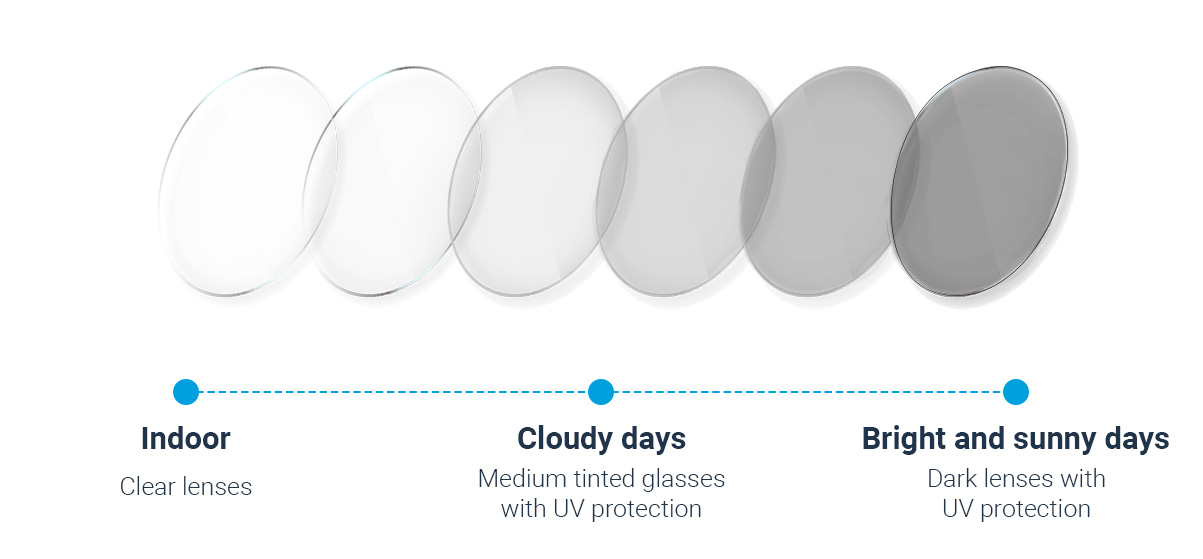
Occasionally, people forget to bring sunglasses with them when they go outside in their prescription glasses. It’s a common mistake. Well, photochromic lenses could be the solution you’re looking for. They automatically change from light to dark when they move from indoors to outdoors, so you never have to worry about forgetting them.
What are photochromic lenses and how do they work?
A photochromic lens, also known as a transition lens, is a type of lens that adjusts to changing light conditions, remaining clear indoors and darkening outdoors as necessary. While they are fully clear inside, they function as fashionable sunglasses as well as fully clear glasses inside when you are exposed to bright sunlight. In addition, they block 100% of UVA/B rays.
How do photochromic lenses work?
During the process of making a photochromic lens, small molecules are fixed into the lenses. The lenses are totally clear until they are exposed to sunlight. As a result of this chemical process, the molecules shift, change shapes, and absorb light. The molecules darken to the tint of a sunglass. During UV exposure, the photochromic lenses will remain dark while exposed to the rays, but when they are removed from the light source, the molecules will turn the lens back into its original clear state.
Photochromic lenses provide a number of benefits
With dual purpose functionality, these glasses can be used as both sunglasses as well as fully transparent glasses, so you won’t have to carry two pairs of eyeglasses..
This product offers 100% protection against the damaging effects of the sun’s UVA and UVB rays..
An ideal solution for someone who wishes to purchase both a pair of glasses and sunglasses at the same time..
You can reduce the risks of cataracts or other eye diseases by reducing the amount of time you are exposed to harmful ultraviolet rays.
Photochromic lenses may have some disadvantages as well
-
Despite the fact that photochromic lenses can transition from clear to dark fairly quickly, they can take quite some time to transition back to clear. This could be somewhat inconvenient or even hazardous for those who enter a dark room. Stay aware of this and make sure that you take great care.
-
It is suggested that photochromic lenses be used by people who have a high level of sensitivity to light, but they are best worn by those who do not have an extreme sensitivity to light. However, if you do have an extreme sensitivity to light, you should seek medical advice.
FAQs
Definitely, light adaptive lenses will help you keep your eyes safe without you having to decide or make a judgement on whether or not you need them. In spite of overcast conditions, the lenses are still capable of absorbing ultraviolet radiation and causing damage to your eyes when the sun shines through the clouds. Therefore, they will automatically darken.
Our standard light reactive lenses are intended for general use and can be used for driving.
Whether you are wearing a light adaptive lens, that includes a built in solar filter, or choosing to use a photochromic lens without any additional filter, we will provide you with the same level of UV protection as standard sunglasses. Photochromic lenses provide 100% protection against UVA and UVB rays.
If you are considering purchasing a pair of light reactive lenses, it is really up to you to choose which colour will suit your needs and what you intend to use them for when you are choosing them. We offer our most basic lenses in browns and greys. In contrast, grey lenses provide a more natural appearance of colours and are ideal for everyday use. They enhance contrast for a sharper image. While brown lenses enhance contrast for a sharper picture.















